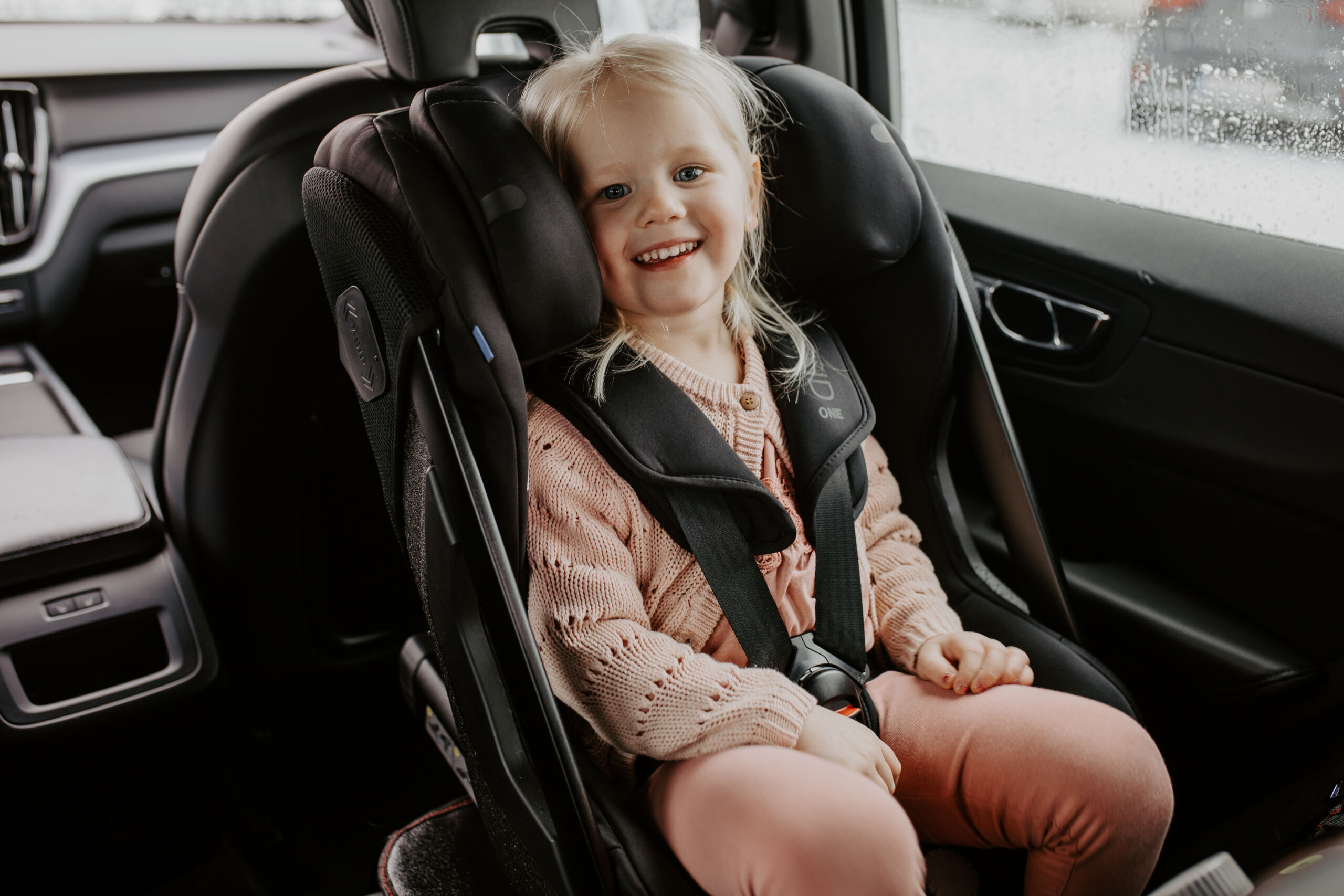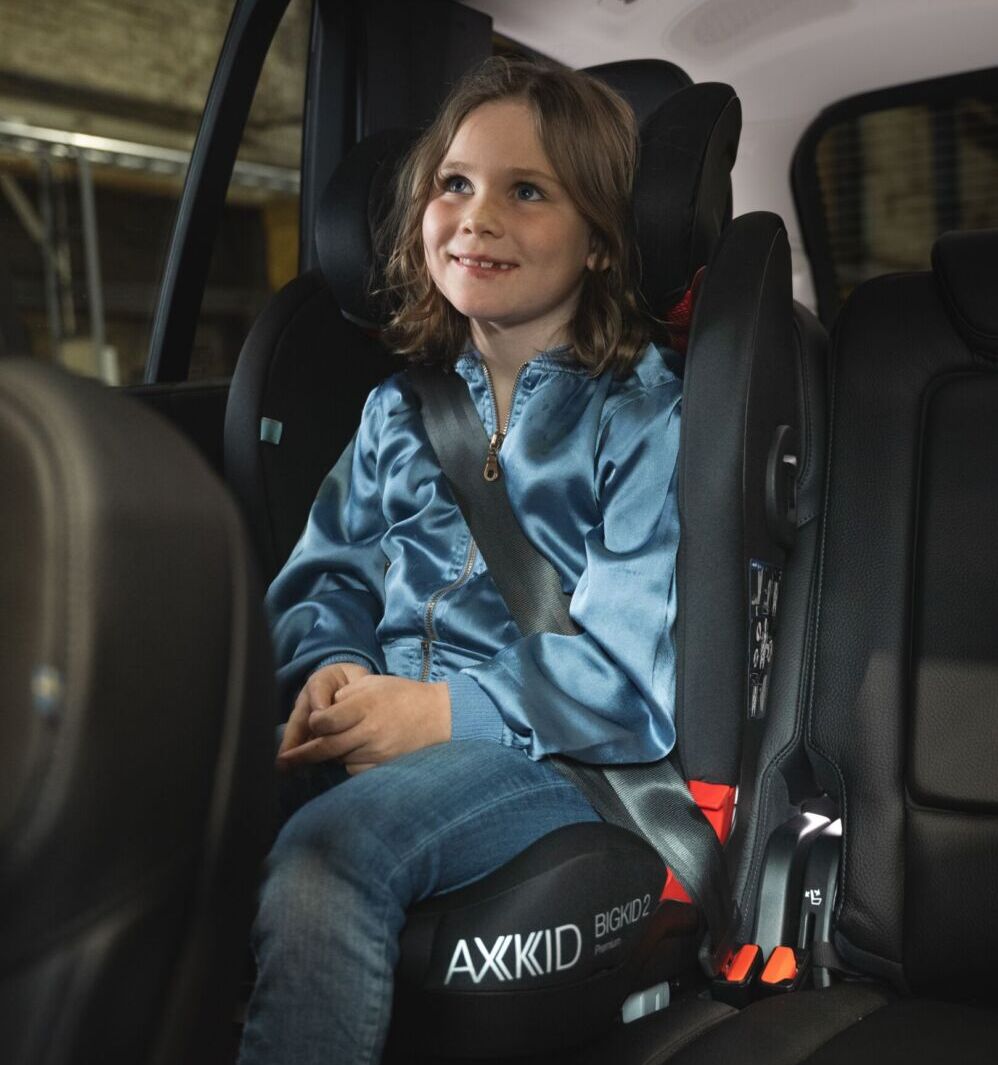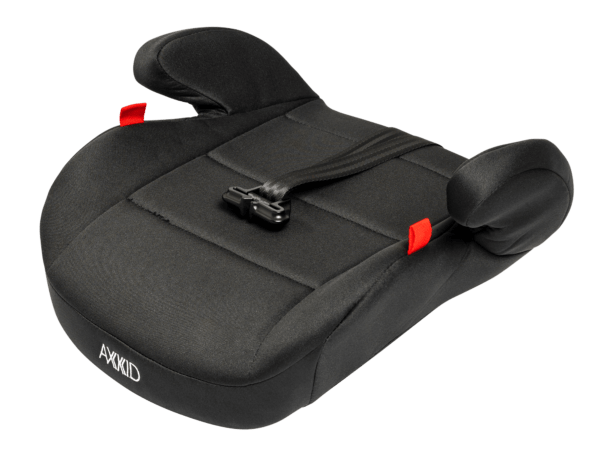What car seat should I choose for my child? This is a common question for many first-time parents, and it can be confusing with all the different options to choose a car seat that suits your child and family the best. In this car seat guide, we will take it from the beginning and try to explain all the different steps along the way and what options you have for your child to sit safely in the car.
Buying your first or even second car seat is not always an easy process. In addition to the regulations and crash tests to keep informed upon, you might also have your personal preferences. Car seats save lives.
For the child’s safety, it is important to use the right type of car seat depending on the child’s height and weight. That’s why we at Axkid wish to clarify this jungle of car seats, starting with a review of the different car seat categories.
Throughout childhood, a total of up to 4 different car seats are needed
1. Infant car seat for newborns and small babies
How to protect newborn babies in the car
The baby car seat offers the best protection for the smallest ones during their first months of life. It is developed and best suited for newborns and small babies, so this should always be your starter-seat. You often carry it in and out of the car and you seldom leave it in the car when not using it, and many of the baby car seats on the market are stroller-compatible, making the baby car seat a given in everyday life (Read more about installing our infant car seats on strollers here »). Even though it can be easy to carry your child around in it, it is important to not leave newborns in their baby car seat for long periods of time. Make sure to take plenty of breaks and take your baby out of the baby car seat when traveling far. You should always install it in a rear-facing position. If you install it in the front seat you must make sure that the airbag is switched off.
What baby car seat should I choose for my child?
Many families think it is important that it is easy to install and simple to take in and out of the car. For this reason, many families choose an i-Size seat with ISOFIX-connectors. Axkid Modukid Infant is ideal for infants, developed for suiting our smallest ones.
When has my child has outgrown the baby car seat?
An Infant car seat is used from birth up to approx. 12 months of age and is categorised by length 40-75cm or 40-87cm. It is outgrown when your child has passed the approved weight or height limit for the baby car seat. Even though your child has not passed the approved weight or height you can still change to a rear-facing car seat earlier. A good time to switch is when your child can sit upright by themselves without any support. If your child can sit without support but is still small, it could be a good idea to start with a baby cushion insert in the car seat.

2. Rear-facing car seat
What rear-facing car seat should I choose for my child?
The most important thing is that you choose a rear-facing car seat for your child. A rear-facing car seat is the safest option for children when traveling in a car and are 5 times safer compared to forward-facing car seats. We at Axkid always recommend that your child stays rear-facing for as long as possible. When it comes to which rear-facing car seat you should choose there are many options and it depends on what suits you and your family the best – no families are alike. Often you don´t carry the car seat in and out of the car, as with the baby car seat, but on the other hand, having two cars you might be looking for a rear-facing car seat that is easy to move between cars and simple to install.
The rear-facing car seat is the car seat that is used for the longest duration. Axkid recommends children to travel rear-faced for as long as possible, preferably up to 6-7 years of age. Since children should travel rear-facing for as long as possible, it is important to dedicate time and commitment to ensure that the choice is right.
When has my child outgrown the rear-facing car seat?
This is a common question for many as you don´t want to turn to early. The answer is; when your child has passed the maximum weight or height limit of the car seat. It is also time to change when your child’s head rise more than a third above the edge of the headrest – roughly at the height of the child’s eyes. All children grow in different ways and it’s therefore difficult to say an exact age for when it’s time to turn. If it would be possible, all of us should travel rear-facing, even adults. A rear-facing car seat reduces children’s injuries by up to 90%. So as we have said many times before, let your child stay rear-facing as long as possible.
Ps, did you know that with Axkid ONE+, works both as an infant car seat and a rear-facing car seat? With the additional soft inlays as extra support your infant can travel safely in the Axkid ONE+ from day one to 7 years!

3. High back booster seat
Why does my child need a booster seat after outgrowing the rear-facing car seat?
When your child has outgrown the rear-facing car seat but still hasn’t reached the optimum length, the booster seat, as the name suggests will boost your child high enough for your vehicle’s lap and shoulder belts to restrain your child safely. The booster seat and booster pillow are the “end station” of car seats for older children before they can be seated with the seat belt like adults. Unlike the baby car seat and the rear-facing car seat, the booster seats are installed forward-facing.
What booster seat should I choose?
The benefits of choosing a booster seat with ISOFIX-connectors is that you can ensure that the booster seat is always firmly secured, even when your child isn’t in the car. When choosing a booster seat without ISOFIX that requires belt attachment it must still always be secured in position with the vehicle’s seat belt during travel, regardless of whether your child is in the booster seat.
When your child is around 6-7 years old and a rear-facing car seat is no longer an option, the high back booster seat Axkid Bigkid 2 is the perfect choice. Our high-back booster seat is comfortable to use up to 150 cm. If you are not sure when to switch to a forward-facing seat, read about the transition from rear-facing travel here.
When has my child outgrown the booster seat?
When your child has passed the weight or height limit of the booster seat, it means they have passed the last stage of the car seat and the child is big enough to use a backless booster seat.

4. Backless booster seat
Finally, if needed, end the car seat journey with the booster cushion Axkid Mate so that the vehicle’s three-point seat belt is correctly positioned on your child’s body. Axkid Mate is certified for 15-36kg and is necessary until the child properly fits the car’s three-point belt.








